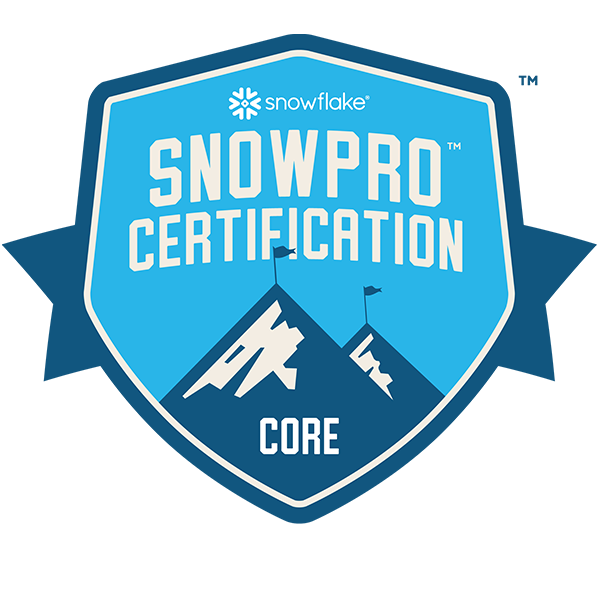Let’s Supercharge Snowflake Alerts with Cool ntfy Open-source Notifications!

Snowflake offers a comprehensive alert and email notification system, enabling automatic notifications and actions based on data changes. This system is pivotal for data monitoring and real-time response in various scenarios.
https://docs.snowflake.com/en/guides-overview-alerts
Snowflake’s capabilities extend to configuring Snowpipe for error notifications or using tasks for anomaly detection. Additionally, integrating with AWS SNS and Azure Event Grid can elevate your notification strategies to a new level.
Now, How about if we add a cool mobile and desktop push notification :)
ntfy (Notify) for Mobile and Desktop Notifications
ntfy stands out as an innovative solution for sending notifications to mobile phones and desktops. This open-source tool, deployable on your own infrastructure, supports notifications via PUT/POST methods. It’s compatible with Android, iOS, and web applications, ensuring a wide reach.
Setting up ntfy is straightforward:
- Ensure Python and Docker are installed in your environment.
- Download the
server.ymlfile from the ntfy GitHub repository https://github.com/binwiederhier/ntfy/blob/main/server/server.yml
open the yml file and add your local or host IP address
example:base-url: http://10.0.0.4For iOS users, an additional line in theserver.ymlfile is required for compatibility.upstream-base-url: https://ntfy.sh - Run the ntfy Docker container
sudo docker run -p 80:80 -itd binwiederhier/ntfy serveUsing ntfy
Once ntfy is operational, access its web interface, subscribe to a topic (e.g., DataAlerts), and send messages via terminal commands:
curl -d “Backup on $(hostname) complete” 10.0.0.4/DataAlerts
Integrating ntfy with Snowflake
To demonstrate a real-world application, let’s integrate ntfy with Snowflake using FastAPI to create an API layer. The API will receive messages and forward them to ntfy. The FastAPI script (Main.py) includes a simple endpoint to handle this process:
from fastapi import FastAPI, Query
import subprocess
app = FastAPI()
@app.get("/ntfyrun")
def ntfyrun(message: str = Query(…, description="The message to send")):
try:
subprocess.run(["curl", "-d", message, "10.0.0.4/DataAlerts"], check=True)
return {"message": f"Command executed with message: {message}"}
except subprocess.CalledProcessError as e:
return {"error": str(e)}Let's Dockerize the FastAPI Main.py to run in the background.
- Create a
Dockerfilewith the necessary instructions. here is the sample.
FROM python:3.11
WORKDIR /usr/src/app
COPY requirements.txt .
RUN pip install - no-cache-dir -r requirements.txt # add library requirements in the txt file
COPY . .
CMD ["uvicorn", "main:app", " - host", "0.0.0.0", " - port", "8000"]2. Build and run the Docker container:
sudo docker build -t ntfyapi .
sudo docker run -d -p 8000:8000 ntfyapiFinal Step — Snowflake Integration
- Create a network rule in Snowflake
CREATE OR REPLACE NETWORK RULE ntfy_api_network_rule
MODE = EGRESS
TYPE = HOST_PORT
VALUE_LIST = ('10.0.0.4:8000'); -- use your public exposed IP for the APIhttps://docs.snowflake.com/en/user-guide/network-rules
2. Set up an external access integration
CREATE OR REPLACE EXTERNAL ACCESS INTEGRATION ntfy_api_access_integration
ALLOWED_NETWORK_RULES = (ntfy_api_network_rule)
ENABLED = true;3. Develop a function to connect to the API endpoint
CREATE OR REPLACE FUNCTION Ntfy_Push_Notification(Message varchar)
RETURNS STRING
LANGUAGE PYTHON
RUNTIME_VERSION = 3.8
HANDLER = 'ntfy_push'
EXTERNAL_ACCESS_INTEGRATIONS = (ntfy_api_access_integration)
PACKAGES = ('snowflake-snowpark-python','requests')
AS
$$
import snowflake
import requests
import json
def ntfy_push():
base_url = "http://10.0.0.4:8000/ntfyrun?message="
full_url = base_url + MESSAGE
r = requests.get(full_url)
return r.json()
$$;Executing
SELECT Ntfy_Push_Notification("Message from Snowflake");will trigger the notification process and all the mobile and desktop devices subscribed to the topic DataAlerts will get notifications pop-up and sound based on local settings.
With this setup, you can now use this UDF in tasks, alerts, and various other places in your Snowflake environment.
References:
https://github.com/sarathi-tech/ntfy (forked from binwiederhier/ntfy)








